Content:
Pear is a crop that is highly demanded among gardeners. Despite the fact that initially the culture was thermophilic and was grown mainly in the southern regions, today its cultivation is possible in the northern regions of Russia.
General information about culture
The efforts of the breeders were not wasted, and the pear acquired such an important characteristic for growing in Russian conditions as frost resistance. The highest rates in this respect are shown by varieties belonging to the winter category. Currently, there are a large number of winter varieties of crops, which, in addition to being grown in regions with harsh climates, also have a very long shelf life.
Gardeners appreciate winter pear varieties for the following reasons:
- long-term preservation of taste;
- long-term preservation of the marketable appearance;
- winter hardiness;
- bright fruity aroma and good taste, which are also manifested when ripening in the fruit storage;
- the versatility of the fruit.
Consider the most popular modern winter crop varieties in more detail.
Popular winter varieties
Speaking about winter varieties of pears, it should be understood that there are a fairly large number of them. And not all of them really demonstrate the characteristics that are expected of them. But there is a certain number of varieties, which are strongly recommended to be considered as candidates for planting.
New Year
The Bryansk variety with the fruits of winter ripening - New Year's pear, is a medium-sized tree with a rounded crown of medium density. The variety is characterized by sufficient winter hardiness for planting in central Russia. The variety is classified as early-growing and is characterized by a high yield. The fruit of the culture is of medium size and wide pear-shaped. The pulp of the pear is white with a slight green tint near the skin. Sweet taste with slight astringency.
Golden ball
The popular pear, the Golden Ball, is described as having a medium vigor. The variety was developed by the South Ural Research Institute of Horticulture and Potato Growing, obtained by crossing two varieties: Powisla and Ussuriyskaya pear. Due to a particularly high index of winter hardiness, planting crops is possible in regions such as the middle zone of Russia, the Urals and Siberia.
Pear Golden Ball has short pear-shaped fruits, the weight of which ranges from 100 to 120 grams. The color of ripe pears is green with an insignificant tan on the sunny side. The pulp is sweet and juicy. The pear has a good yield indicator. The culture is generally resistant to scab, pear mites.
Chelyabinsk
The specialists of the South Ural Research Institute of Fruit and Vegetable Growing and Potato Growing were engaged in breeding the Chelyabinsk winter pear. The variety is obtained by crossing the selected Ussuri pear with Severyanka.Medium-sized tree with a rounded crown. Fruiting begins in the fourth year of the life of the culture. The yield indicator of this pear is late average.
The new variety is characterized by a high winter hardiness. It can withstand frosts down to -37 degrees.
The fruits are golden in color with an orange-red blush on the sunny side. The mass of a ripe pear varies from 80 to 100 g. Especially large specimens can grow up to 150 g. Chelyabinsk pears can be stored until mid-January.
Dekabrinka
Another interesting species - the Dekabrinka pear, according to the description, is a late autumn variety, despite the fact that the name gives a clear reference to the winter month. The creation of pears was carried out by the South Ural Research Institute of Fruit and Vegetable and Potato Growing. The varietal culture appeared as a result of crossing the Ussuri pear of the genus Limonovka Issyk-Kul and Lesnoy Beauty with the seedling of the elite No. 143. In the Urals, where winters are usually quite severe, Dekabrinka took root well. In addition, the culture is cultivated in the Central, Southern regions and Western Siberia.
The tree can grow up to 5 meters high and has a dense and spherical crown.
The fruits of the variety are one-dimensional, medium-sized. Since they are firmly attached to the branch, the pears do not fall off after ripening. The peel of the fruit is green; in the process of ripening it turns yellow and acquires a slight blush. The pulp is firm and juicy. The taste is sweet with a slight sourness.
Narta
Another winter pear, Narta, is an early winter variety. She is a fast-growing tree with a rare wide-pyramidal crown. The variety is self-fertile, requires planting of pollinators. The yield is average. Medium resistant to extreme growing conditions. The fruits have a beautiful appearance, the pulp is yellowish-white and juicy, the taste is sweet and sour. Removable maturity of pears occurs on average closer to the end of September-early October. The fruits are characterized by good keeping quality and tolerate transportation well, including over long distances.
Rich
Rich is another winter pear of Chelyabinsk selection. Its trees are medium-sized and have a semi-spreading crown. The fruit of the culture grows quite large. The weight of a pear can vary from 180 to 230 g. The color of the fruit is yellow, the taste is sweet and rich. Harvesting is usually done during October. The winter hardiness of the variety is quite high. Pear Rich according to the description of the variety does not need additional ripening, they can be eaten directly from the tree.
Bere winter Michurina
Michurin himself worked on the selection of Bere winter pears. The variety was obtained as a result of crossing the wild Ussuri pear and the Bere Royal variety. The fruits of Bere winter Michurin are not too large - no more than 120 grams, have a round shape. The color of ripe pears is light yellow with an insignificant blush. The latter begins to appear during the period of fruit ripening. The pulp is very juicy, tart in taste.
The pear tree of this species grows of medium height and has a pyramidal shape. The variety was bred specifically for planting in regions with problematic climatic conditions.
Winter Kubarevnaya
Pear variety Zimnyaya Kubarevidnaya was obtained as a result of pollination of Bergamot Volzhsky with a mixture of Williams and Lyubimitsa Klappa pollen. Kubarevidny winter pear trees are of medium height and a somewhat raised, wide-pyromidal crown. They are distinguished by an increased ability to form shoots. The fruits are large enough - from 150 to 200 g, have, as the name implies, a cuboid regular shape. The color of the pear during the period of removable maturity is green with a blurred pinkish blush. As it ripens, the fruit acquires a golden yellow color, and the blush becomes more intense.The fruits of the Kubarev-shaped Winter pear can be stored, unlike most late varieties of pears, almost until spring. Pear trees begin to bear fruit at the age of six.
Horup
Horup is a variety with an average winter hardiness. It is recommended for planting in regions with fairly mild winters. The Horup pear tree has an average height and medium-sized fruits - 100-150 g. The shape of pears is spherical. The color of the fruit is yellow-green, the flesh is juicy and very sweet, with a slight hint of astringency. The culture is resistant to most bacterial fungal diseases. Many gardeners consider this variety to be one of the best late autumn varieties.
Pear 68 hybrid
There are no reliable data on parental varieties of pear 68 hybrid. It is also impossible to accurately designate the place of its initial deployment. This hybrid variety is distinguished by a high rate of frost resistance and almost complete immunity to harmful insects and diseases.
Fruits range from medium to very large (350 grams). The shape of the fruit can be pear-shaped, oval or conical. The skin is yellowish-green with dots on the surface.
Kuban late
Another interesting pear variety - Kuban late, also refers to winter. The tree of this variety is medium-sized and has an irregularly shaped crown of medium density. The fruits are usually medium-sized. Their mass rarely exceeds 150 g. They are pear-shaped, regular, greenish in color with a slight tan on the sunny side. During storage, pears begin to turn yellow and become softer and sweeter.
Having considered a sufficient number of late varieties of pears, many, for sure, will learn something new for themselves and will be able to choose an option that is suitable in all respects.
Harvesting and storage
Winter pear varieties are harvested not fully ripe. The harvest period can last up to one week. The timing depends on the specific variety and the climatic conditions of the region. Harvesting unripe fruit is generally not a problem. If you provide the right storage conditions, they will certainly ripen.
Before sending pears for storage, you should carefully sort the fruits for ripeness-unripeness and the presence-absence of rot, obvious damage or signs of disease. Sick, overripe and lost specimens are not suitable for long-term storage.
In order for the crop to survive until winter, it will take some effort to ensure proper storage conditions. In this case, you should adhere to the following rules:
- the best storage place will be the cellar;
- the cellar must be fumigated with sulfur vapors before placing the pear harvest into it;
- the balance of temperature and humidity should be observed;
- in no case should pears be stored in close proximity to other fruits;
- the container for storage should be placed 15 cm from the walls of the storage.
If everything is done correctly, with the onset of cold weather, you can delight yourself with sweet and aromatic fruits reminiscent of summer.
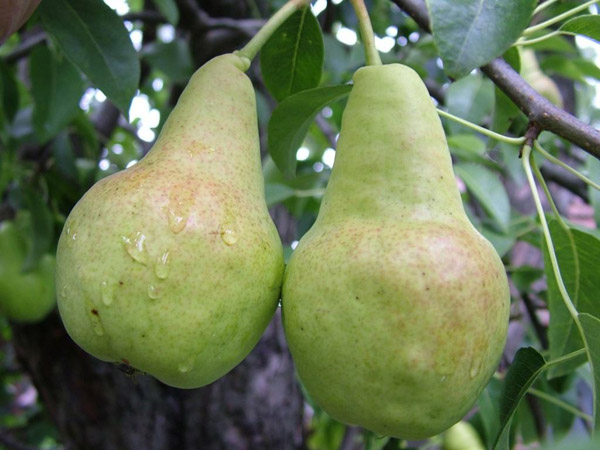


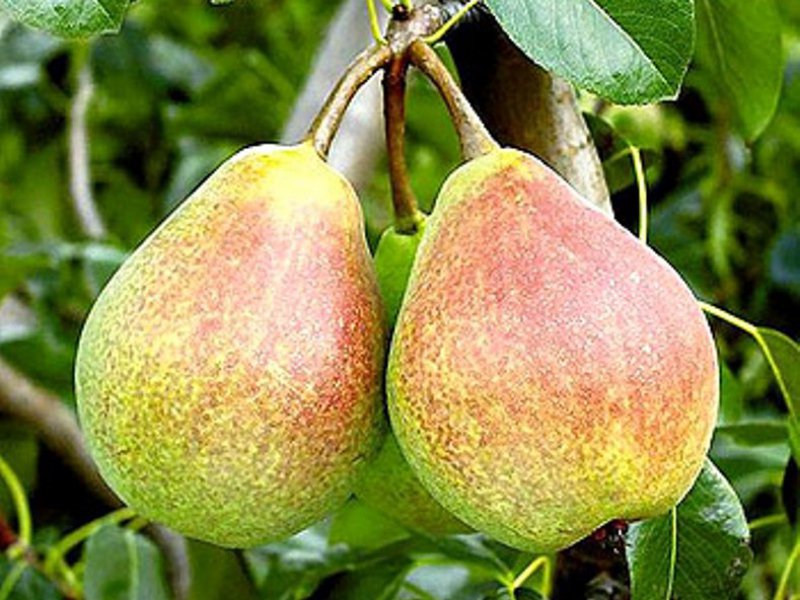
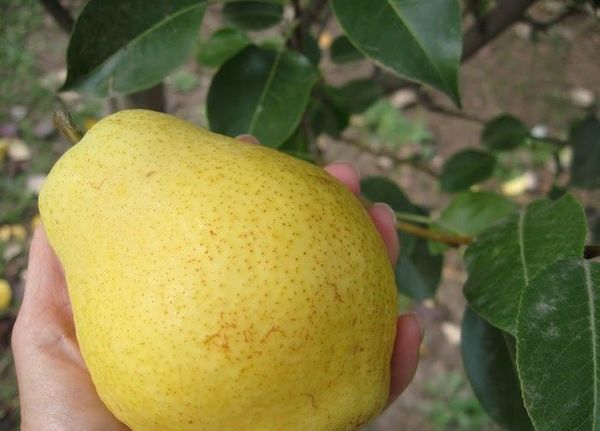
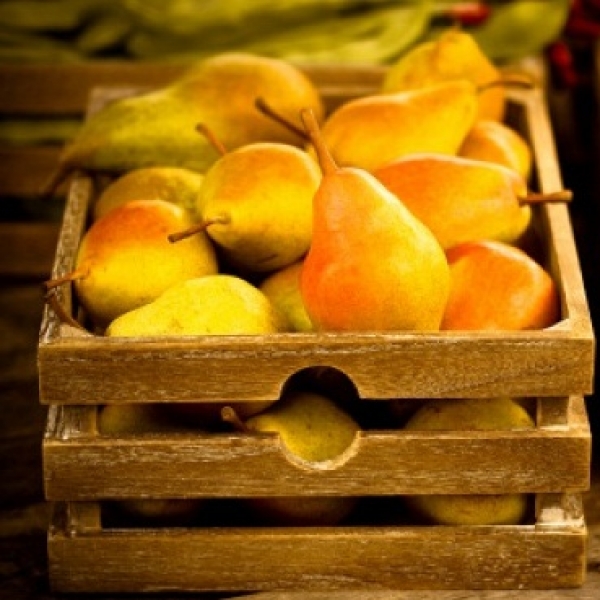




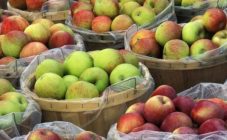







Thanks for the info!!!!!